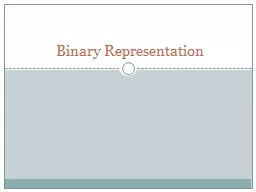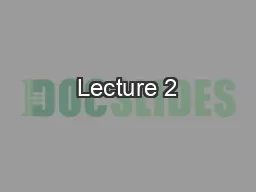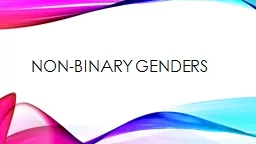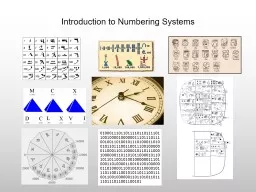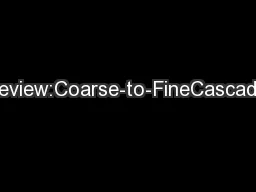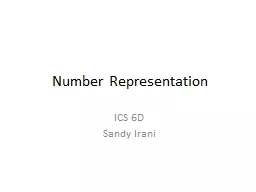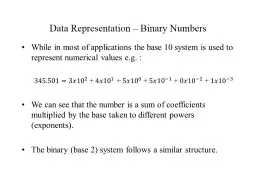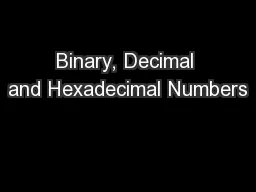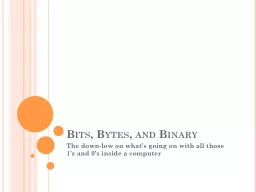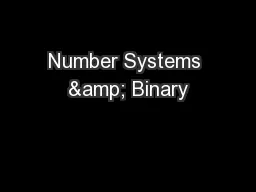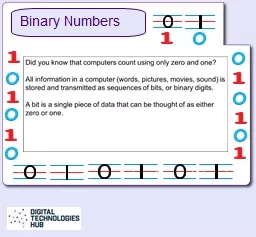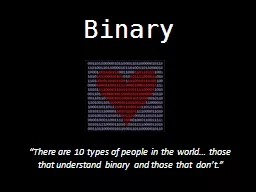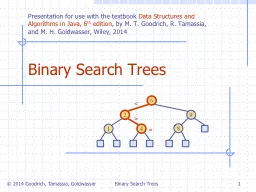PPT-Binary Representation
Author : karlyn-bohler | Published Date : 2016-09-03
Binary Representation for Numbers Assume 4bit numbers 5 as an integer 0101 5 as an integer How 50 as a real number How What about 55 Sign Bit R eserve the mostsignificant
Presentation Embed Code
Download Presentation
Download Presentation The PPT/PDF document "Binary Representation" is the property of its rightful owner. Permission is granted to download and print the materials on this website for personal, non-commercial use only, and to display it on your personal computer provided you do not modify the materials and that you retain all copyright notices contained in the materials. By downloading content from our website, you accept the terms of this agreement.
Binary Representation: Transcript
Download Rules Of Document
"Binary Representation"The content belongs to its owner. You may download and print it for personal use, without modification, and keep all copyright notices. By downloading, you agree to these terms.
Related Documents

